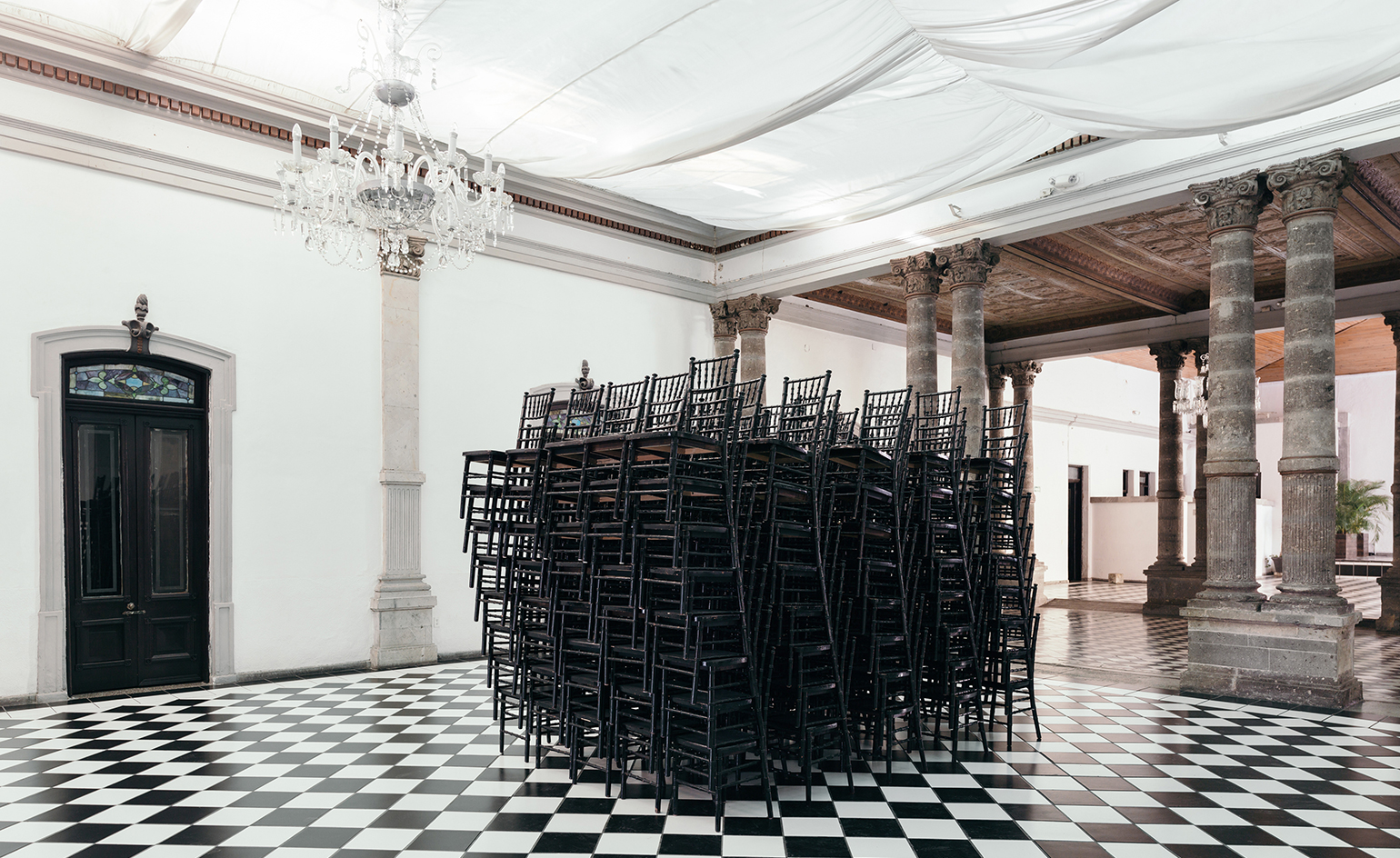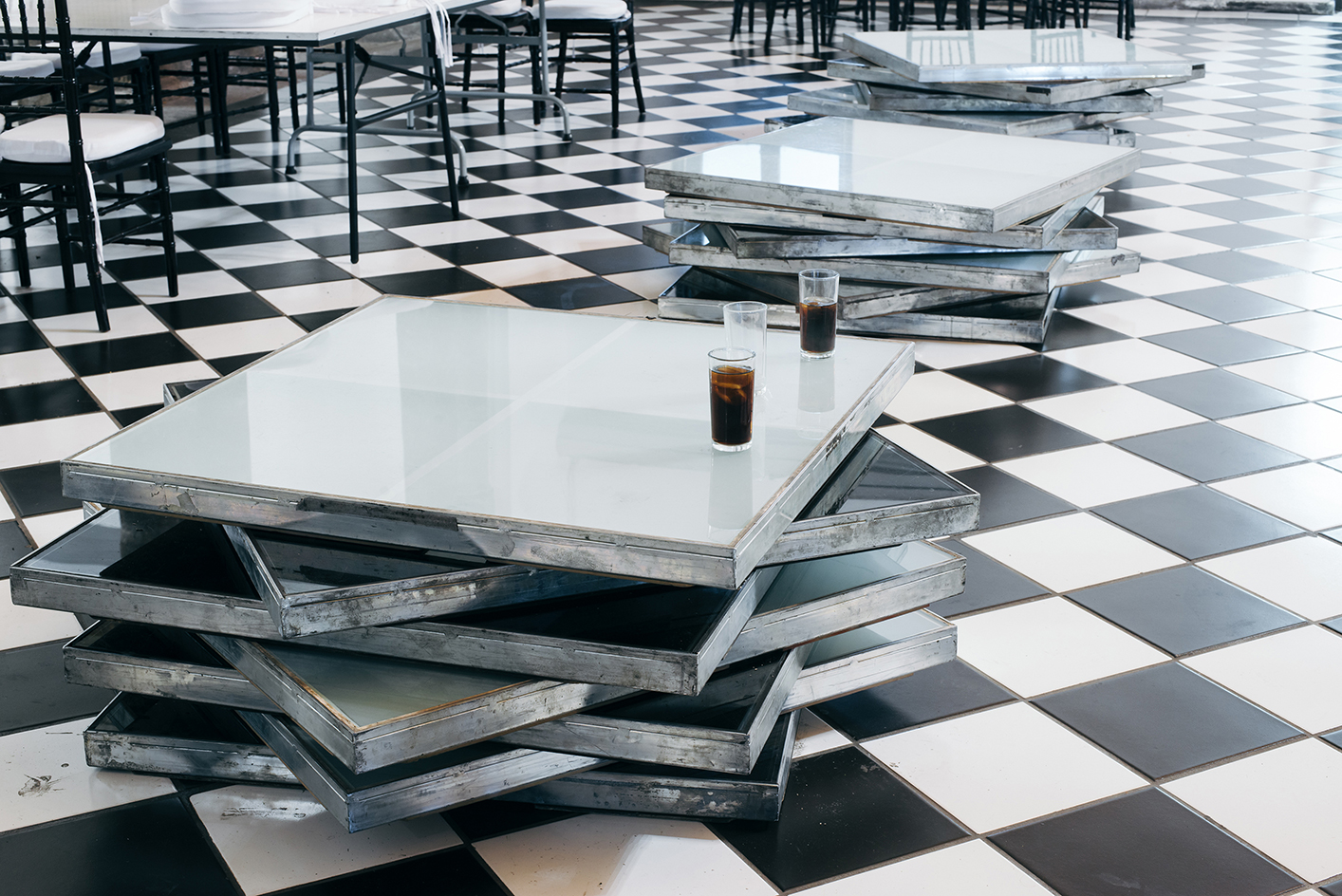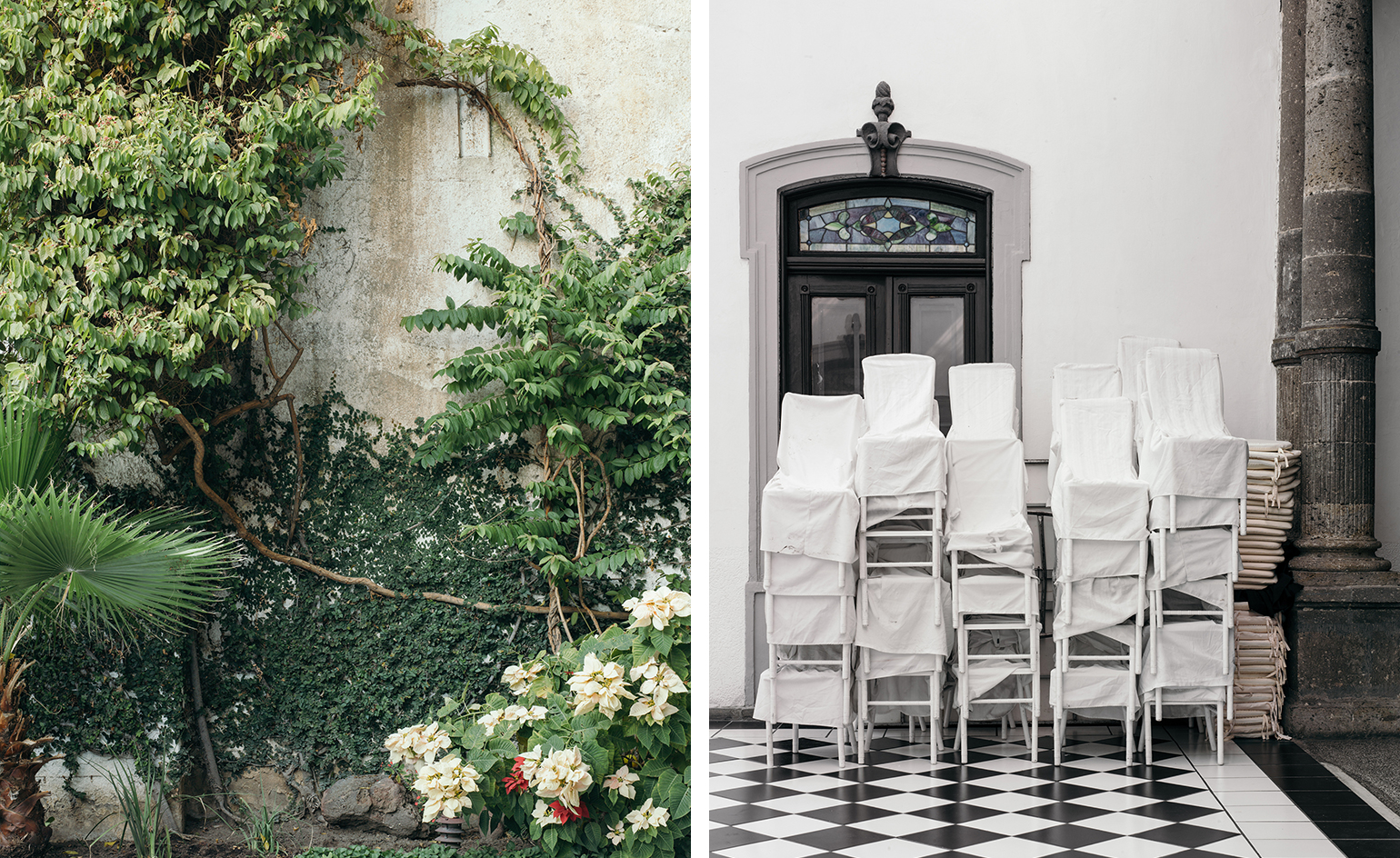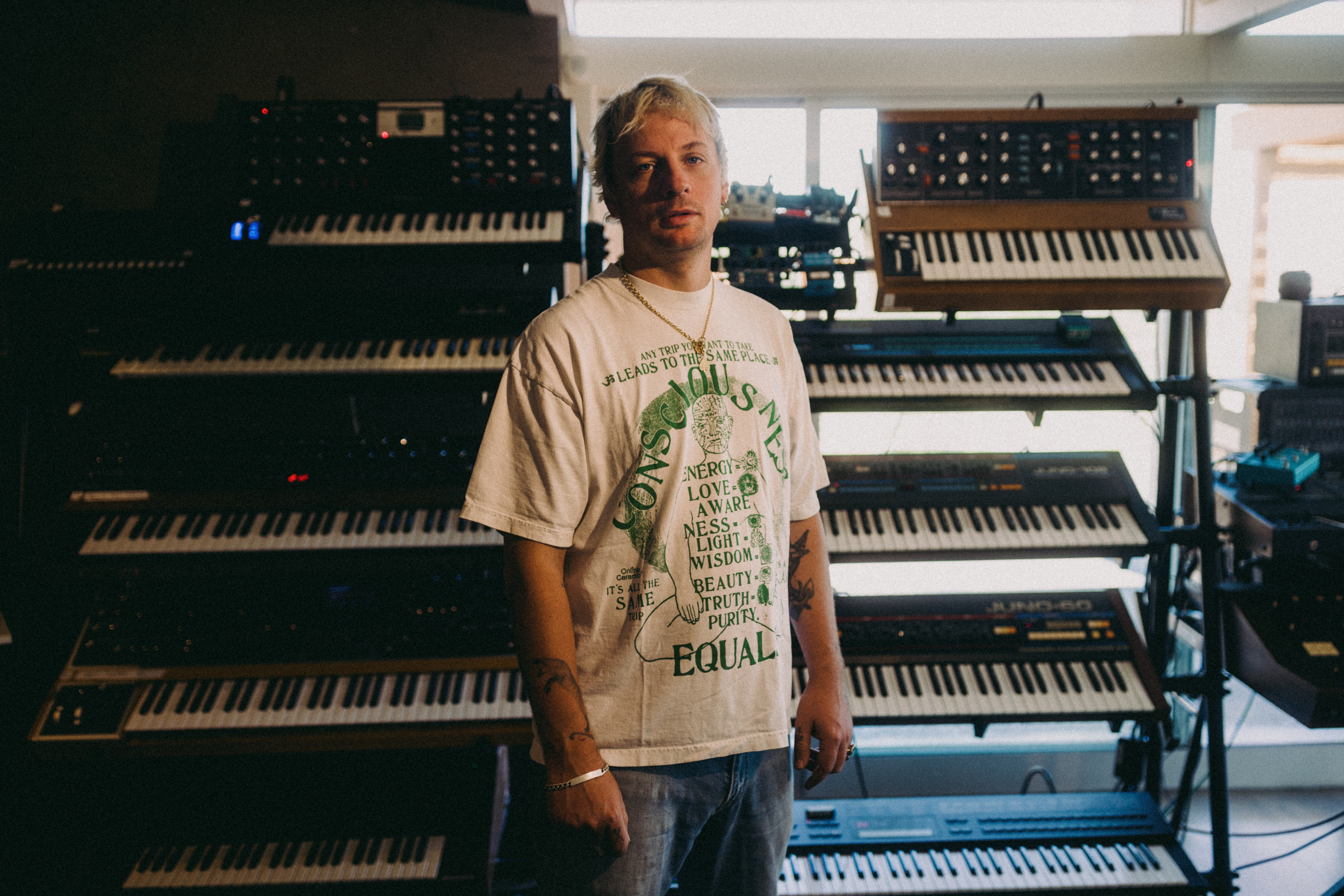Empty house: Carmen Argote delves into family history for her latest exhibition

A few years ago, the Los Angeles-based, Mexican-born artist Carmen Argote was teaching ceramics to youth at LA's Inner City Arts, when she received a grant that allowed her to take some time away from her full-time job and focus on her photography.
‘I wanted to do something that was more in line with my practice, which requires time,’ says Argote, who has been making photographic, painting, and installation studies of architecture and interiors since 2010.
These have included everything from stretched canvas adaptations of handball courts at Los Angeles Unified School District elementary schools and wooden tracings of the Schindler House to muslin installations re-interpreting homes her father, who studied architecture but never practiced, wanted to build in his hometown of Guadalajara, Mexico.
‘When we came to LA, he took jobs to pay the rent and survive. He was a truck driver, a crossing guard, all these different things, but he always had his drafting desk in the house. I never connected my interest in architecture to his drawings until recently, and I would gravitate towards the bird's eye view and his plans, but I never related it to my personal history until recently.'
These fascinations began with Mansión Magnolia, an 1890 stone manor in the historic district of Guadalajara that Argote's paternal grandmother inherited and converted into an events space.
‘I was thinking about the effect of neoclassical architecture on my father in my previous body of work and how the tall ceilings and doors give you a feeling of self-worth and self-importance. It builds you up and tells you who you are, and it builds up all these notions of class,’ says Argote. ‘It was always present in my life and my father's life. He never lived there, but my great aunts did, and they've been very present in the stories about the house.’
When Argote first visited the space in 2014 – her family had originally moved to Los Angeles when she was five – she considered Walter Benjamin's writings on architecture and how it was a force that was always acting upon human beings, and how the only real way to know a space was to live inside it until you could form a new understanding of the architecture to the point where you would know your way around in the dark. As Benjamin wrote in 1936, ‘Buildings are appropriated in a twofold manner: by use and by perception – or rather, by touch and sight.'
After her aunt agreed to let her live in the events space for three months — in a makeshift room that her grandmother and father once used as an office — she emerged with a series of photographs that will go on display this Saturday at the Shulamit Nazarian gallery in Venice, California.
Together, the images provide an intoxicating narrative about the personal and projected history of this inherited space that was intermittently inhabited by her family. It's a love letter to the myth of a city (and home) her father imagined but never actualised. There are images capturing a rainbow-coloured bouncy castle and stacks of cascading black and white chairs inside the home's grand neoclassical hall; haunting studies of empty refrigerators, abandoned kitchens and lonely sodas on modernist tables; meditations on the detritus (stacks of cups or piles of dirt) from the parties held inside the space; or simply apparitional blurs of Argote moving through the vast spaces like a spectre connecting these disparate points in space and time, modernism and the neoclassical.
’There's a lot of isolation involved. I didn't set out to make an installation, I took the camera because it was a way to document my cup of coffee, the towel that I used in the shower, the tiles that were there, it was a way of seeing things that were right in front of me that I might miss,’ says Argote, who built relationships with the staff, saw how they booked, prepared and executed the birthday parties, graduations, or eventos electronicos (ie raves) and then was left alone to witness the aftermath surrounded by the photos and spirits of her relatives.
She adds, ‘Nobody has lived there since my tias, so I felt this layering and continuation of our features, pathways, our ways of walking. The drive was to get to know the house and through knowing the house utilise this resource that had been so present in my life but that I only knew in fragments.’

The Los Angeles-based, Mexican-born artist first visited the space in 2014 and reflected on Walter Benjamin's writings on architecture. She decided to live in the space and emerged with a series of photographs. Pictured: Black Chairs, 2016

Together, the images provide an intoxicating narrative about the personal and projected history of this inherited space, that was intermittently inhabited by her family. Pictured: Tias, 2016

’I didn't set out to make an installation. I took the camera because it was a way to document my cup of coffee, the towel that I used in the shower, the tiles that were there, it was a way of seeing things that were right in front of me that I might miss,’ says Argote. Pictured: Two Cokes, 2016

She adds, ‘The drive was to get to know the house and through knowing the house utilise this resource that had been so present in my life but that I only knew in fragments.’ Pictured left: El Jardin, 2016. Right: Draped Chairs, 2016
INFORMATION
’Carmen Argote: Mansión Magnolia’ is on view from 16 April – 28 May. For more details, please visit the Shulamit Nazarian gallery’s website
Photography courtesy of the artist and the gallery
ADDRESS
Shulamit Nazarian
17 North Venice Boulevard
Venice, California
Receive our daily digest of inspiration, escapism and design stories from around the world direct to your inbox.
TELEPHONE
1.310 281 0961
-
 Terrified to get inked? This inviting Brooklyn tattoo parlour is for people who are 'a little bit nervous'
Terrified to get inked? This inviting Brooklyn tattoo parlour is for people who are 'a little bit nervous'With minty-green walls and an option to 'call mom', Tiny Zaps' Williamsburg location was designed to tame jitters
-
 Let’s hear it for the Chopard L.U.C Grand Strike chiming watch
Let’s hear it for the Chopard L.U.C Grand Strike chiming watchThe Swiss watchmaker’s most complicated timepiece to date features an innovative approach to producing a crystal-clear sound
-
 Form... and flavour? The best design-led restaurant debuts of 2025
Form... and flavour? The best design-led restaurant debuts of 2025A Wallpaper* edit of the restaurant interiors that shaped how we ate, gathered and lingered this year
-
 Nadia Lee Cohen distils a distant American memory into an unflinching new photo book
Nadia Lee Cohen distils a distant American memory into an unflinching new photo book‘Holy Ohio’ documents the British photographer and filmmaker’s personal journey as she reconnects with distant family and her earliest American memories
-
 Ed Ruscha’s foray into chocolate is sweet, smart and very American
Ed Ruscha’s foray into chocolate is sweet, smart and very AmericanArt and chocolate combine deliciously in ‘Made in California’, a project from the artist with andSons Chocolatiers
-
 Jamel Shabazz’s photographs are a love letter to Prospect Park
Jamel Shabazz’s photographs are a love letter to Prospect ParkIn a new book, ‘Prospect Park: Photographs of a Brooklyn Oasis, 1980 to 2025’, Jamel Shabazz discovers a warmer side of human nature
-
 The Hammer Museum in Los Angeles launches the seventh iteration of its highly anticipated artist biennial
The Hammer Museum in Los Angeles launches the seventh iteration of its highly anticipated artist biennialOne of the gallery's flagship exhibitions, Made in LA showcases the breadth and depth of the city's contemporary art scene
-
 Thomas Prior’s photography captures the uncanny fragility of American life
Thomas Prior’s photography captures the uncanny fragility of American lifeA new book unites two decades of the photographer’s piercing, uneasy work
-
 Central Park’s revitalised Delacorte Theater gears up for a new future
Central Park’s revitalised Delacorte Theater gears up for a new futureEnnead Architects helmed an ambitious renovation process that has given the New York City cultural landmark a vibrant and more accessible future
-
 Stephen Prina borrows from pop, classical and modern music: now MoMA pays tribute to his performance work
Stephen Prina borrows from pop, classical and modern music: now MoMA pays tribute to his performance work‘Stephen Prina: A Lick and a Promise’ recalls the artist, musician, and composer’s performances, and is presented throughout MoMA. Prina tells us more
-
 Curtains up, Kid Harpoon rethinks the sound of Broadway production ‘Art’
Curtains up, Kid Harpoon rethinks the sound of Broadway production ‘Art’He’s crafted hits with Harry Styles and Miley Cyrus; now songwriter and producer Kid Harpoon (aka Tom Hull) tells us about composing the music for the new, all-star Broadway revival of Yasmina Reza’s play ‘Art’